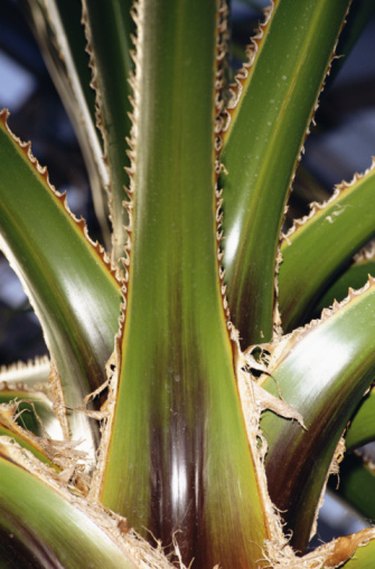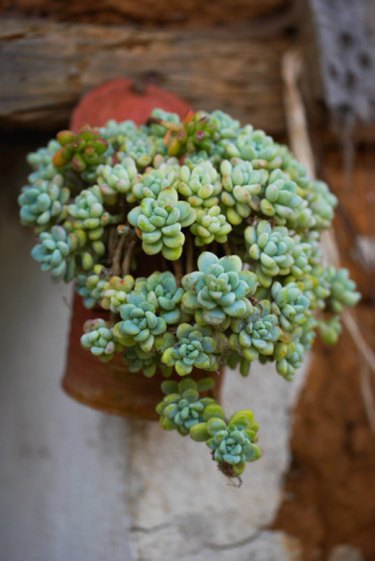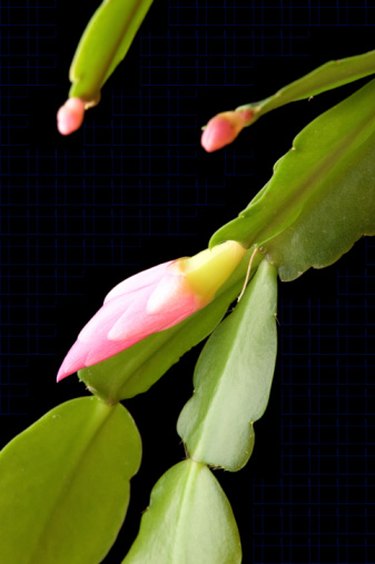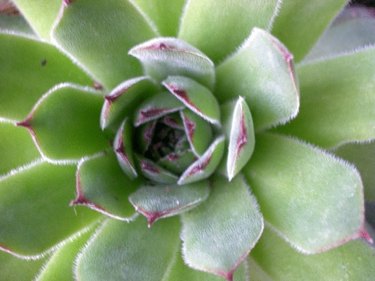
The non-scientific term succulent refers to any plant with fleshy parts. Succulents live in varying habitats across the world and can also be grown as houseplants. Succulents use their fleshy parts as a water reservoir during droughts. Diseases and pests can cause brown spots on succulents.
Insects
Video of the Day

Scale, pinhead-sized insects, suck plant sap, excreting it as honeydew. Their hard outer shell makes them look like a brown bump on a succulent's leaves. The damage caused by a scale infestation resembles that of mealybugs, which weaken plants and leave them unable to continue growing. The excreted honeydew also attracts ants and sooty mold, causing further plant damage.
Video of the Day
Insect Treatments

Dip a cotton swab in rubbing alcohol and dab the brown spots with it to get rid of minor leaf infestation. For a widespread infestation, you'll need a commercial preparation for mealybug infestations. You can probably remove a lone scale on a plant by sliding a sharp knife under the bug.
Fungal Diseases

Anthracnose, a fungal disease with symptoms characterized by circular, pale, sunken or brownish spots, causes plant tissues to dry up and become stiff like bark.
Brown leaf spots with yellowish margins on the leaves can be caused by several fungal diseases. Some spots will have a target pattern or a concentric ring. The fruiting bodies of fungi look like small black dots and are visible in dead plant tissues. The fungi can continue to survive in dead or decaying plant matter in the soil and this can cause reinfestation in existing and new plants.
Fungal Disease Treatments

The Cactus and Succulent Society of America recommends discarding diseased plants and their soil. Apparently healthy plants that resided near the diseased ones should be treated for fungal infection. Remove them from their pots and rinse away the soil from the roots. Submerge the plants for 30 minutes in a fungal solution made of 0.15 percent Previur and 0.5 percent DuPont Benomyl.
Allow plants to dry out thoroughly for five to 10 days before replanting them in a permeable soil containing large amounts of pumice, lava-rock, gravel or perlite. If salvaged plants start to show signs of fungal disease again, soak them in fungal solution repeatedly, allowing 14 days to lapse between treatments.